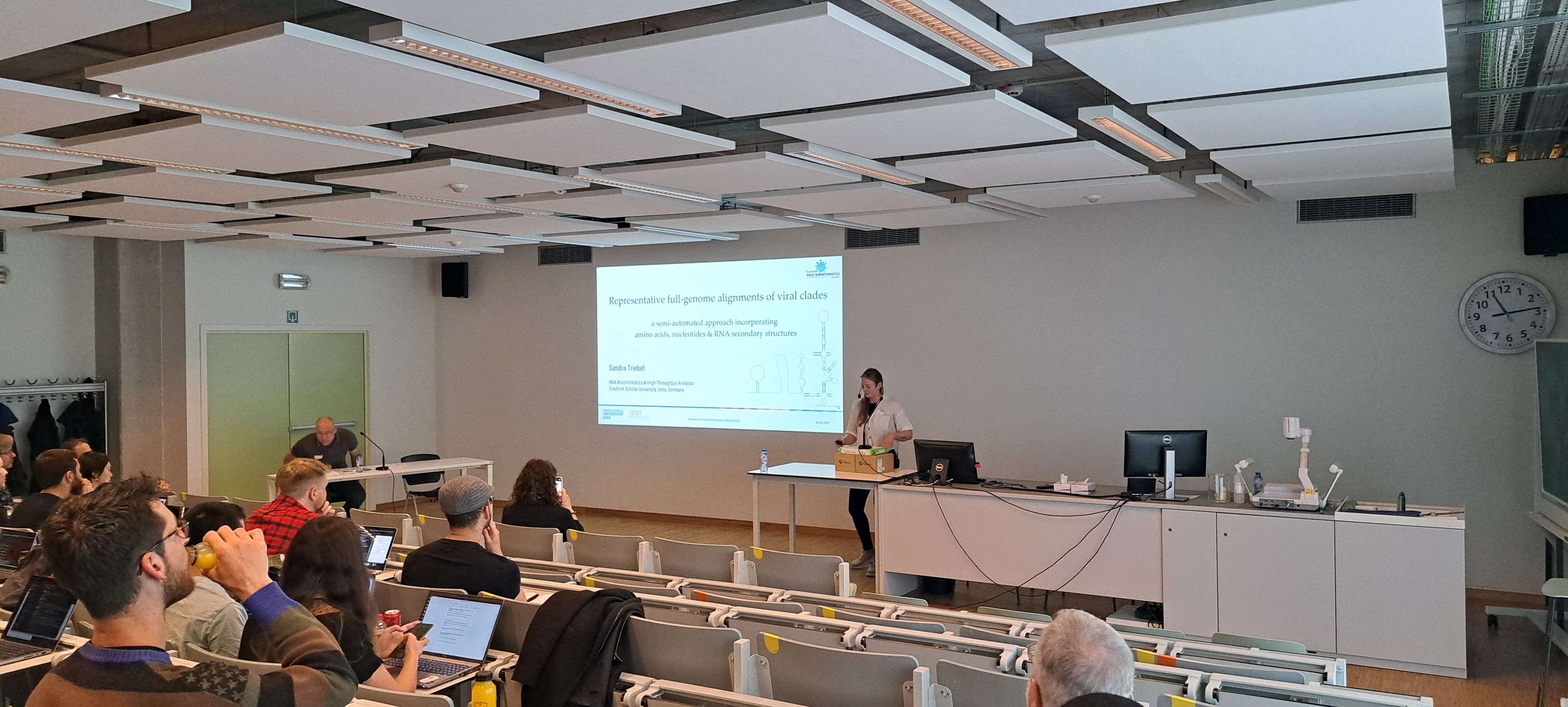Once again, the International Virus Bioinformatics Meeting (ViBioM) brought together leading scientists to advance the critical nexus between virology and bioinformatics. Held from May 28 to 30, 2024, at the Rega Institute in Leuven, Belgium, the conference was organized by the European Virus Bioinformatics Center (EVBC), KU Leuven, and Université Libre de Bruxelles. Notably, EVBC, situated within our group, reflects the successful efforts of Franzi and Manja in our team. The conference featured both oral and poster presentations covering a wide array of topics and cutting-edge research.
Day 1:
The conference commenced on Monday evening with a convivial welcome gathering at MALZ, facilitating initial networking among participants. Tuesday morning’s official opening included welcoming remarks from Manja, EVBC Director, and local organizers Jelle Matthijnssens, Philippe Lemey, and Simon Dellicour. Alexander Gorbalenya from Leiden University delivered the opening keynote, setting a high standard for the sessions to follow.
Day one featured several captivating talks on viral evolutionary history. For example, Mart Krupovic from the Pasteur Institute discussed the evolutionary paths of Varidnaviruses. Other presentations covered topics such as viral eukaryogenesis, genomics of ancient pathogens, and the diversity of helicase superfamilies.
The first poster session (Poster Session A) provided a dynamic platform for researchers to present and discuss their latest findings. Topics ranged from predicting the success of SARS-CoV-2 variants to Virom in psoriasis patients and phage genome architecture. These sessions were crucial for fostering new ideas and potential collaborations.
Day 2:
Wednesday began with a fascinating presentation by Yves Briers from Ghent University on the evolution of bacteriophages. Subsequent discussions centered around viral protein structures, machine learning in viral proteomics, and virus-host interactions.
The second poster session (Poster Session B) sustained high participation, featuring presentations on diverse topics such as Virom of the Western honeybee in Europe, phage genome architecture, and genetic stability of phage therapeutics. These sessions underscored the breadth and depth of ongoing research in this field.
Day 3:
Thursday focused on monitoring and epidemiology, initiated by a lecture from Nathan Grubaugh of the Yale School of Public Health on global genomic surveillance of viruses. Particularly noteworthy was the presentation by Sandra from our group, who discussed the latest advancements in metagenomic surveillance. Her presentation illuminated innovative methods and current findings that enhance understanding of viral diversity and spread.
Additional talks of the day addressed various aspects of viral sequence analysis, including influenza outbreak analyses and the development of tools for analyzing viral sequence data. These presentations emphasized the importance of precise monitoring and analytical techniques for pandemic preparedness.
As we reflect on the successes of ViBioM 2024, it is evident that the conference remains a vital platform for fostering collaboration and innovation in the study of viruses. We eagerly anticipate the next gathering, confident that it will build upon this year’s achievements and continue to push the boundaries of virology and bioinformatics.
For a detailed overview of the program, speakers, posters, and topics, please visit the ViBioM 2024 website.




